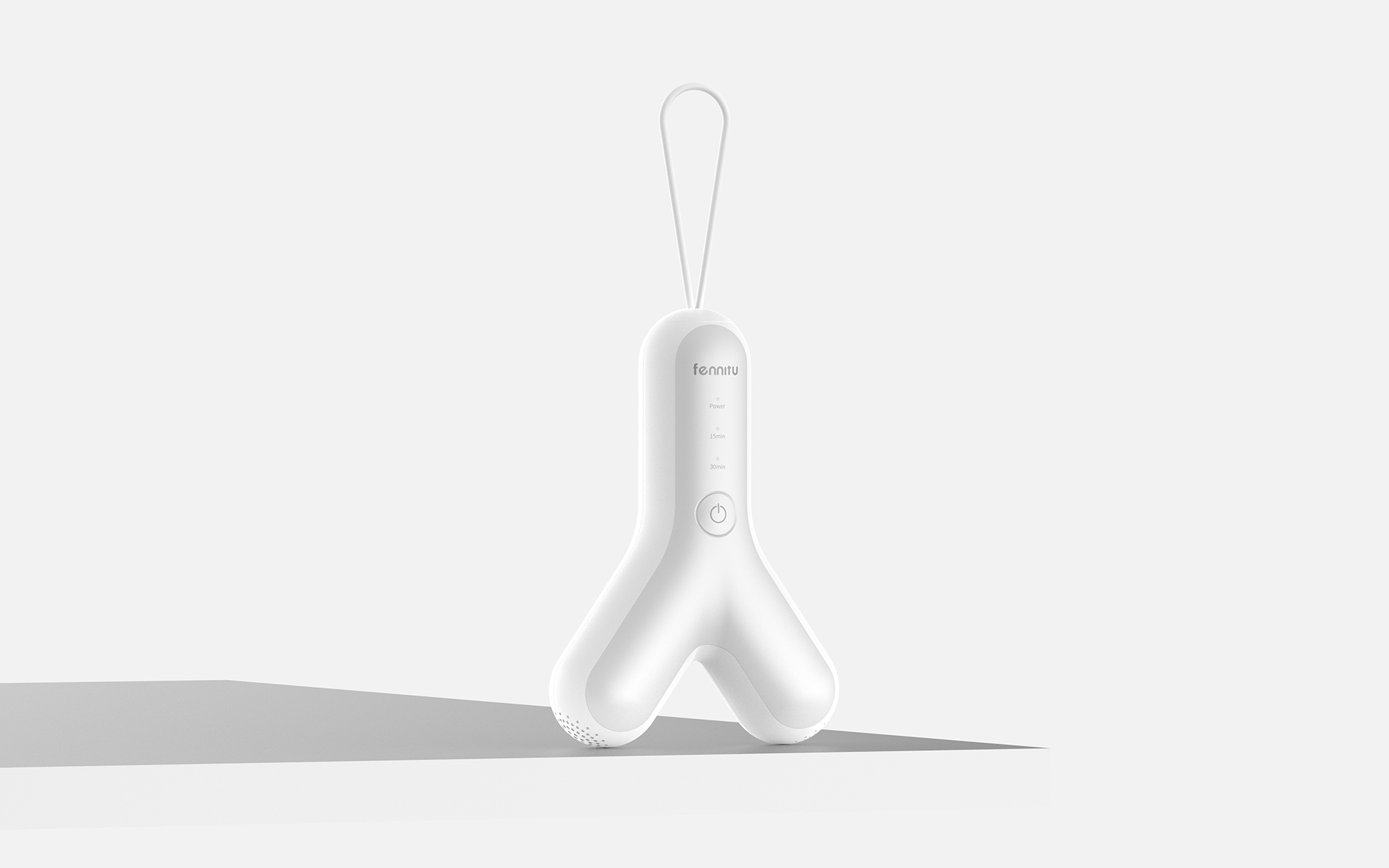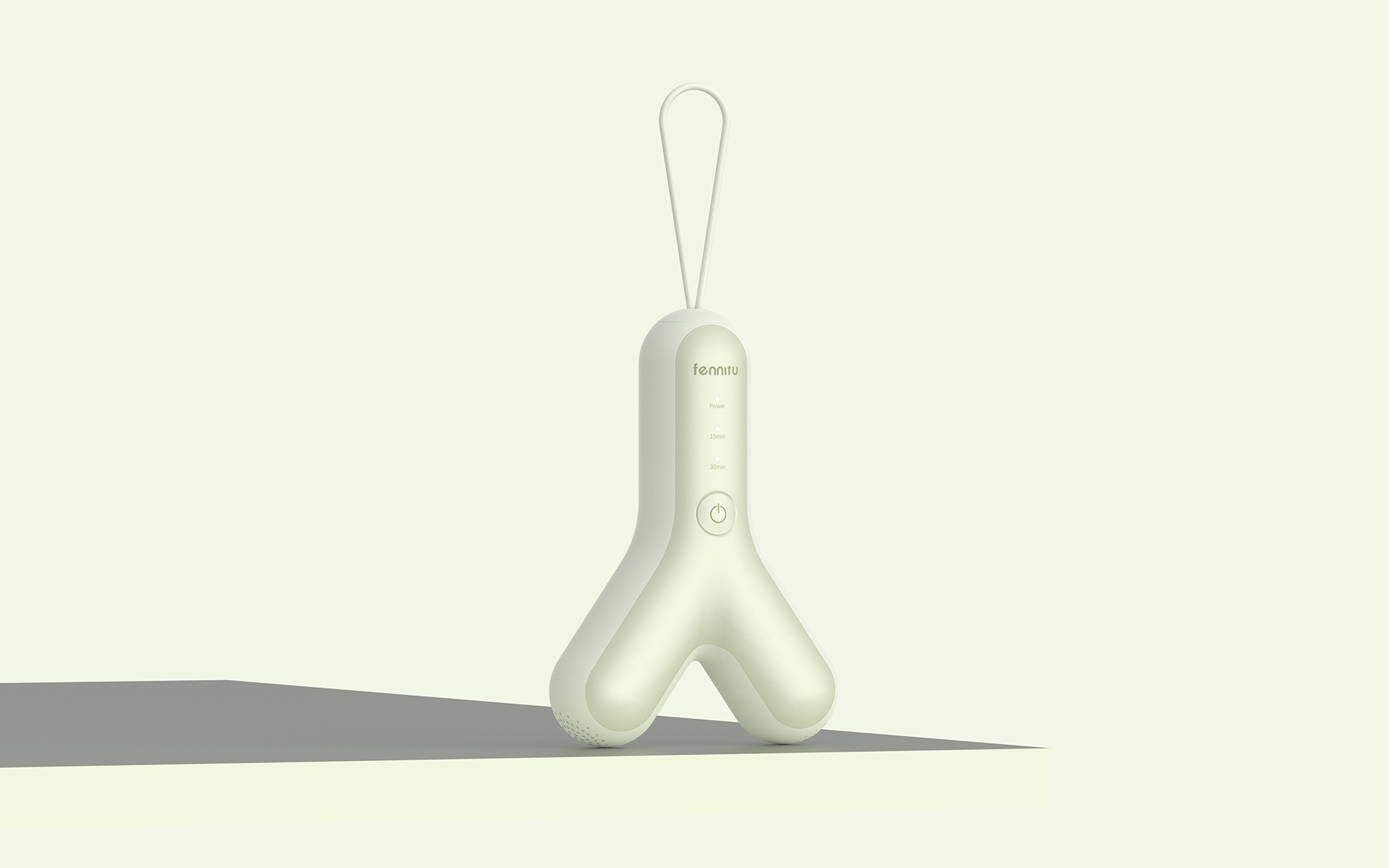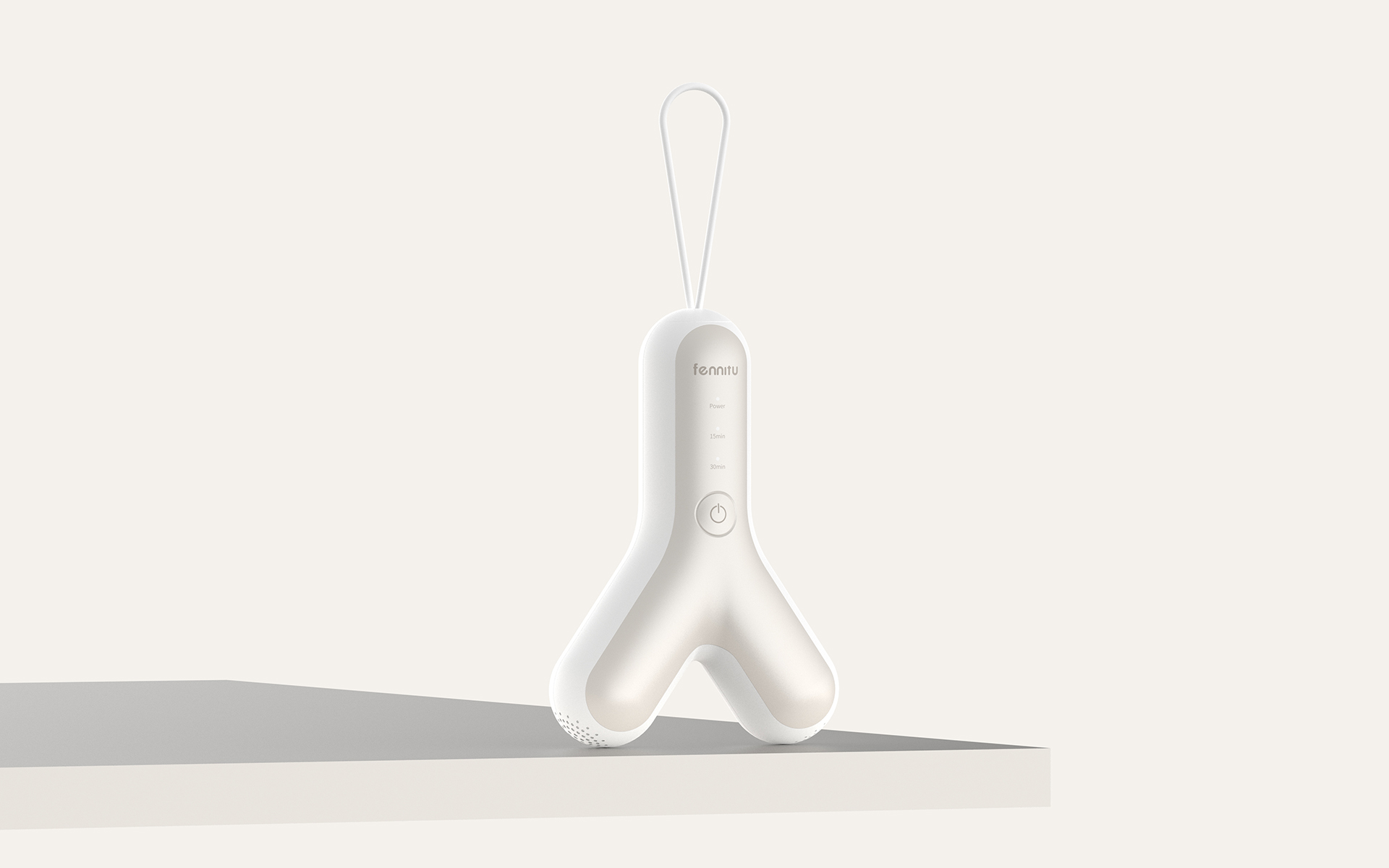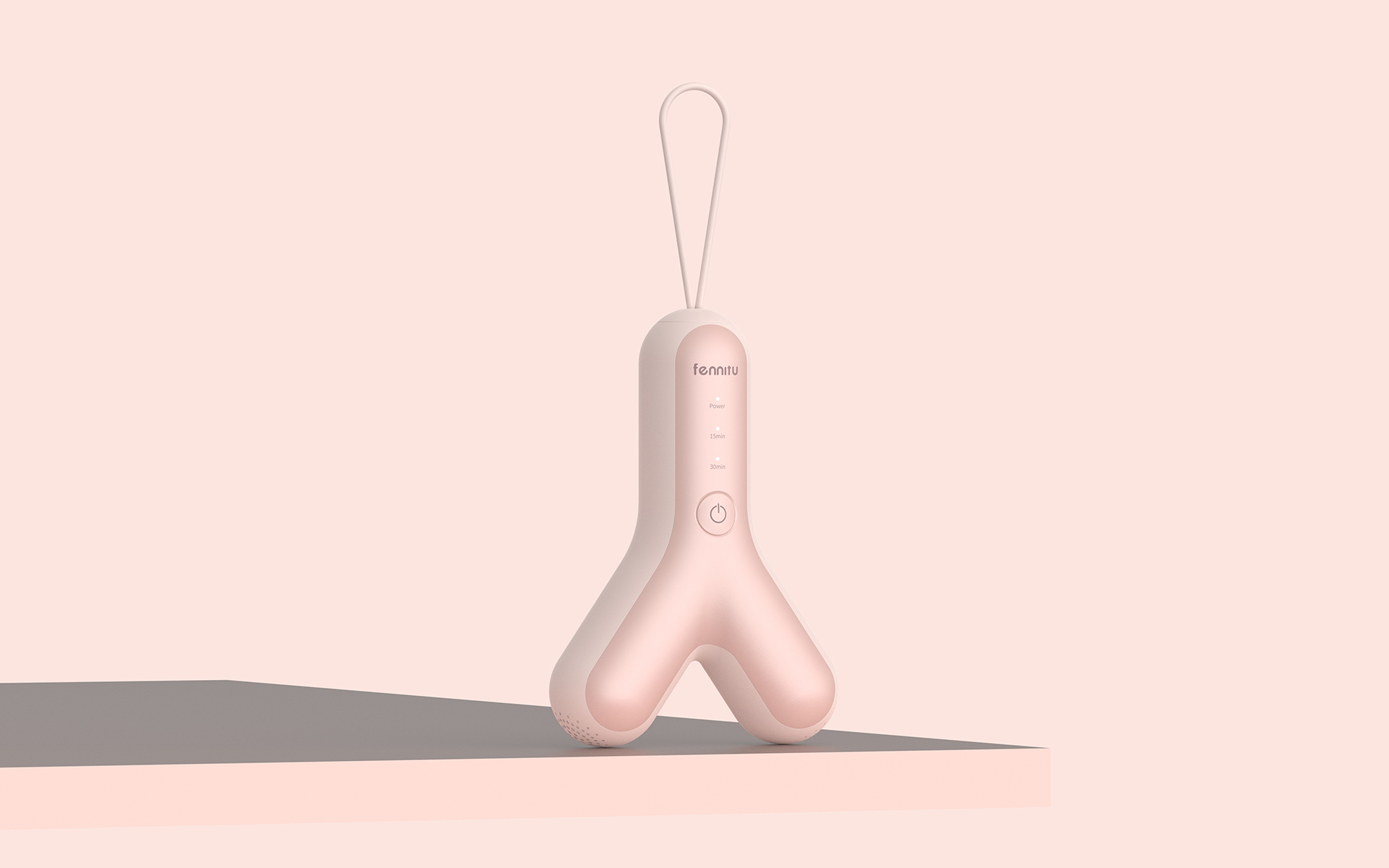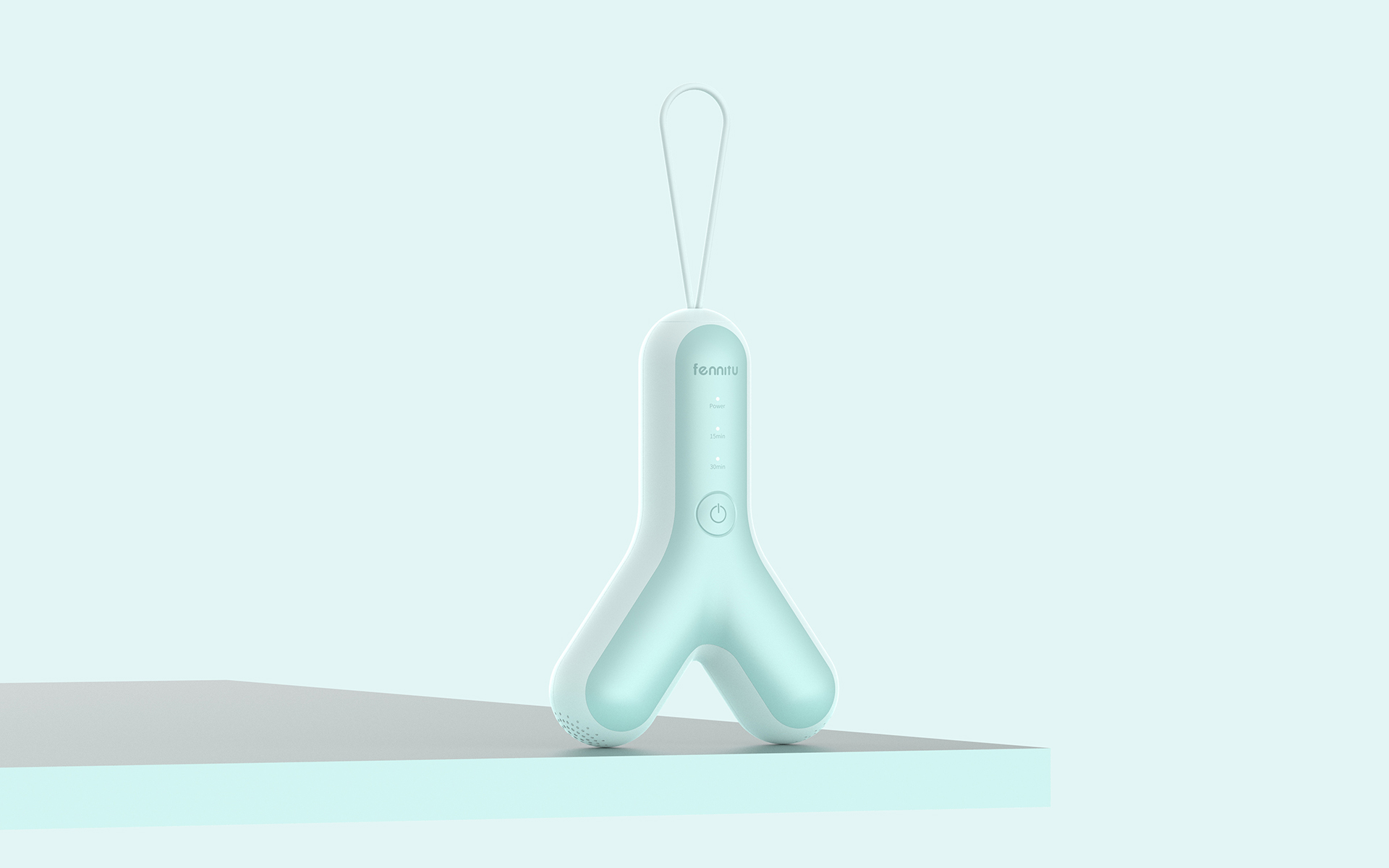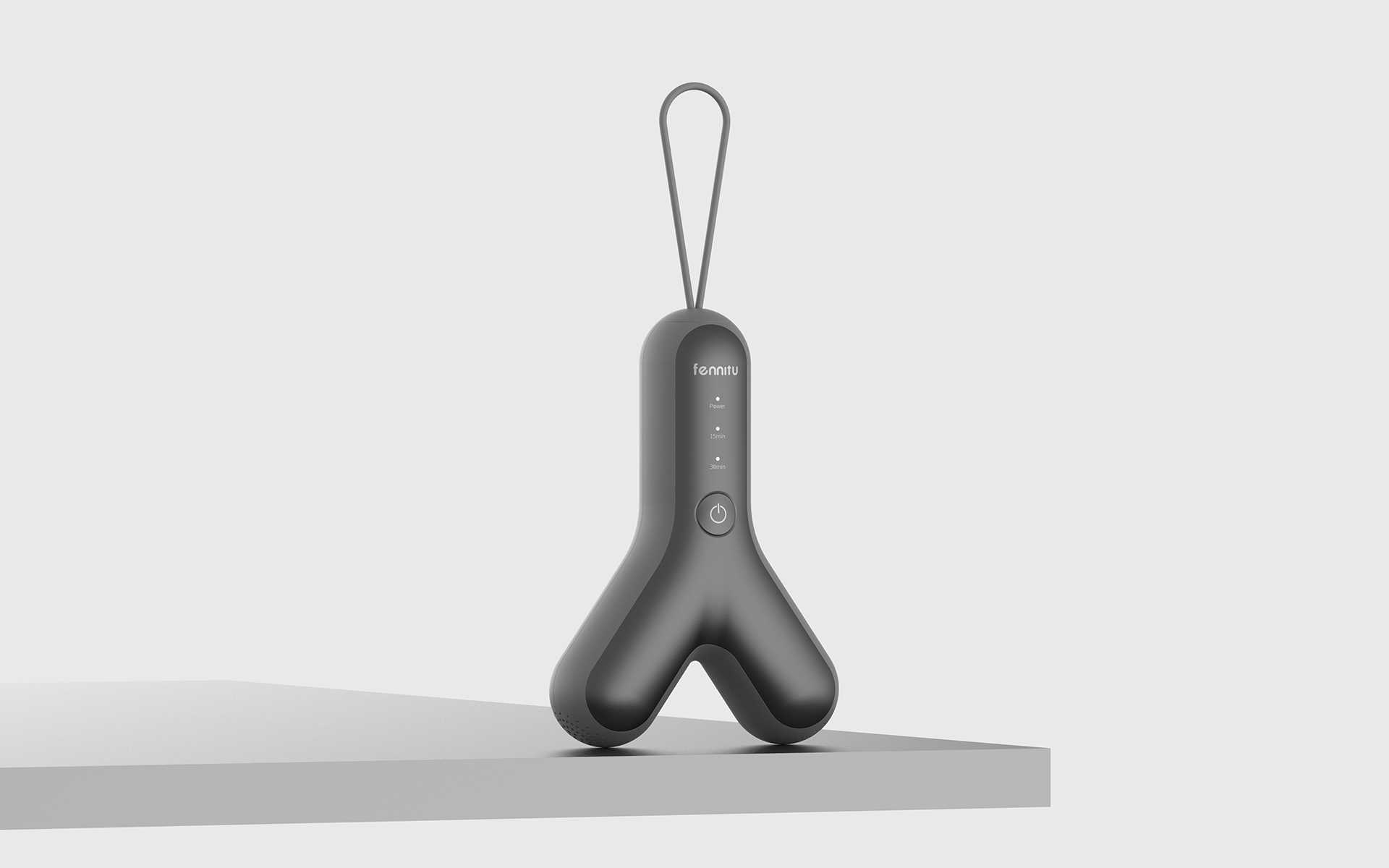核心参数
臭氧浓度:
≈2.07PPM
负离子浓度:
≥ 500万/CM³
你的衣柜里生活着哪些微生物?
衣柜里可能存在各种微生物,这些微生物可能来自衣物、灰尘、湿气或衣柜本身的材料。以下是衣柜里可能存在的一些微生物类型:

霉菌
这是衣柜中最常见的微生物之一。霉菌在潮湿、通风不良的环境中生长迅速,会导致衣物发霉。常见的霉菌有黑曲霉、青霉菌等,不仅影响衣物的外观和质量,还可能释放孢子通过空气传播,对人体健康构成潜在威胁。

细菌
衣柜里的细菌可能来自衣物、灰尘或人体接触。一些常见的细菌,如金黄色葡萄球菌、大肠杆菌等,可能在衣柜里存活并繁殖。这些细菌可能导致皮肤感染、呼吸系统问题或其他健康问题。

尘螨及排泄物
尘螨(螨虫的一种)是一种常见的过敏原,以人体皮屑为食,在衣柜里,尤其是旧衣服上,随处可见。尘螨排泄物和尸体也是重要的过敏原,可能引发哮喘、鼻炎等过敏反应。

真菌
除了霉菌,衣柜里还可能存在其他类型的真菌。这些真菌可能通过空气传播或附着在衣服上进入衣柜。某些真菌可导致皮肤感染、呼吸系统问题或其他健康问题,尤其是对于免疫系统较弱的人。
主要功能
衣柜臭氧消毒器的主要特点
除臭
臭氧具有强氧化性,能有效分解衣柜内的异味,如霉味、潮湿味等,使衣柜内的空气更加清新。
衣柜臭氧消毒器的主要特点
消毒
臭氧可破坏细菌、病毒等微生物的细胞结构,从而达到杀菌消毒的效果,减少衣物内细菌的滋生,保护衣物不受细菌污染。
衣柜臭氧消毒器的主要特点
防霉
臭氧可以抑制霉菌的生长,防止衣物发霉。
衣柜臭氧消毒器的主要特点
延长衣物寿命
衣柜里的衣物如果长期接触潮湿、异味等,容易导致衣物出现发黄、变质等问题,使用臭氧对衣柜进行消毒,可以有效去除异味、杀菌消毒,从而延长衣物的使用寿命。
衣柜臭氧消毒器的主要特点
杀死螨虫
臭氧能与螨虫体内的不饱和脂肪酸发生反应,产生脂质过氧化反应,进而引起蛋白质变性,最终导致螨虫死亡。同时臭氧还能干扰螨虫体内的酶促反应,进一步增强杀螨效果。
衣柜臭氧消毒器的主要特点
净化空气
负离子可以吸收空气中的灰尘、花粉等颗粒物,使衣柜内的空气更加洁净。
衣柜臭氧消毒器的主要特点
消除静电
负离子有助于消除衣服上的静电,减少灰尘粘附在衣服上。
汽车中有多脏?
衣柜里可能存在各种微生物,这些微生物可能来自衣物、灰尘、湿气或衣柜本身的材料。以下是衣柜里可能存在的一些微生物类型:

细菌

病毒

真菌
汽车地毯、座椅和内饰上可能存在的各种真菌:这些真菌不仅影响车内空气质量,还可能引发过敏反应。

其他微生物
主要特点
汽车臭氧消毒器的主要特点
除臭
臭氧还可以分解车内的异味,如烟草味、食物残渣味等,使车内空气更加清新。
汽车臭氧消毒器的主要特点
消毒
超高的负离子浓度可吸附、沉降车内悬浮颗粒,如灰尘、烟雾等,改善车内空气质量。
汽车臭氧消毒器的主要特点
改善空气质量
衣柜里的衣物如果长期接触潮湿、异味等,容易导致衣物出现发黄、变质等问题,使用臭氧对衣柜进行消毒,可以有效去除异味、杀菌消毒,从而延长衣物的使用寿命。
汽车臭氧消毒器的主要特点
净化空气
超高的负离子浓度有助于改善人体的呼吸系统和神经系统功能,使驾驶者和乘客感到更加舒适、清醒。
常见问题
可以从以下几个方面进行分析:
一、臭氧消毒产品的特性
杀菌原理:臭氧(O₃)是一种强氧化剂,具有高效的杀菌能力。它通过破坏细菌、病毒等微生物的细胞结构,达到消毒的效果。
健康风险:虽然臭氧在适当浓度下能有效杀菌,但浓度过高时会对人体产生危害,如刺激呼吸道、引起头疼、咳嗽等症状,甚至可能引发呼吸道疾病。因此,在使用臭氧消毒时需要严格控制浓度。
二、香薰的功能与成分
香薰的作用:香薰通常用于改善空气质量、舒缓情绪、缓解疲劳等。它们含有多种芳香物质,如植物精油等。
成分复杂性:香薰产品的成分可能因品牌、种类而异,其中一些成分可能与臭氧发生化学反应。
三、臭氧与香薰的潜在反应
化学反应可能性:虽然目前没有直接证据表明臭氧与所有香薰成分都会发生有毒反应,但由于香薰成分的复杂性,不能排除在某些特定条件下两者发生化学反应的可能性。
安全考虑:即使臭氧与香薰的某些成分反应不产生有毒气体,但混合使用也可能增加室内空气污染物的种类和浓度,从而对人体健康造成潜在威胁。
四、结论与建议
不建议混合使用:基于上述分析,为了避免潜在的健康风险和环境污染问题,不建议将臭氧消毒产品与香薰功能混合使用。
安全使用建议:
在使用臭氧消毒产品时,应确保室内无人,并严格按照产品说明书控制浓度和使用时间。
如需改善室内空气质量或氛围,可选择在臭氧消毒后、室内通风良好的情况下使用香薰产品。
综上所述,臭氧消毒产品不建议带香薰功能的主要原因是出于安全和健康的考虑。虽然目前没有直接证据表明臭氧与香薰会产生有毒气体,但为了避免潜在的风险和污染问题,建议将两者分开使用。
臭氧消毒器的浓度并不是越高越好,其适用性取决于具体的使用场景、消毒对象以及安全标准。以下是对这一问题的详细分析:
一、浓度与消毒效果的关系
- 有效浓度范围:一般来说,臭氧消毒机的浓度在0.1-1ppm(即mg/m³)之间时,可以有效杀灭空气中的病毒、细菌、霉菌等有害微生物。这个范围是基于广泛的使用经验和科学研究得出的。
- 特定场合需求:在特定场合,如医疗机构或制药行业的洁净室,臭氧浓度可能需要更高。例如,在医疗机构中,根据《医疗机构消毒技术规范》,臭氧浓度应大于等于20mg/m³(即约1ppm),以确保空气消毒效果。而在制药行业的不同洁净级别洁净室中,臭氧浓度也可能达到10ppm或更高。
二、浓度过高的潜在问题
- 对人体健康的危害:臭氧是强氧化剂,高浓度的臭氧可能对人体健康造成损害,如刺激呼吸道、引起咳嗽、胸闷等症状。因此,在使用臭氧消毒器时,必须确保室内无人,并在消毒后充分通风,待臭氧浓度降至安全水平后再进入。
- 对设备的损害:过高的臭氧浓度也可能对室内设备、家具等造成损害,如加速老化、褪色等。
三、综合考虑因素
- 使用场景:不同的使用场景对臭氧浓度的需求不同。例如,家庭卧室、办公室等小空间可能不需要过高的臭氧浓度,而医疗机构、制药厂等需要更高洁净度的场所则可能需要更高的浓度。
- 消毒对象:不同的消毒对象对臭氧的敏感性也不同。因此,在选择臭氧浓度时,需要根据消毒对象的具体情况进行调整。
- 安全标准:在使用臭氧消毒器时,必须严格遵守相关的安全标准和操作规程,确保消毒过程的安全性和有效性。
四、结论
综上所述,臭氧消毒器的浓度并不是越高越好。在选择臭氧浓度时,需要综合考虑使用场景、消毒对象、安全标准等多个因素,并根据实际情况进行灵活调整。同时,在使用过程中必须严格遵守相关的安全操作规程和注意事项,以确保消毒效果的同时保障人体健康和设备安全。
臭氧消毒相对于其它消毒方式,其最大的优势主要体现在以下几个方面:
一、高效性与广谱性
-高效性:臭氧消毒是一种高效的消毒方式,能够迅速杀灭细菌、病毒、霉菌、寄生虫等病原体,有效预防和控制疾病的传播。其强氧化性能够直接破坏病原体的细胞结构,达到快速灭活的效果。
-广谱性:臭氧消毒对多种病原体都具有杀灭作用,且不易产生耐药性。这意味着它适用于各种环境和场所的消毒,无论是空气、水还是物体表面,都能有效消毒。
二、无残留与环保性
-无残留:臭氧在消毒过程中会迅速分解,不会留下有害的残留物。这使得臭氧消毒成为一种对环境友好的消毒方式,避免了传统化学消毒剂可能带来的二次污染问题。
-环保性:臭氧消毒无需添加化学试剂,减少了化学品的使用和排放,有利于环境保护和可持续发展。
三、安全可靠
-安全性:臭氧消毒是一种物理消毒方法,不会对物品产生腐蚀性(但需注意高浓度臭氧对某些材料的腐蚀性),也不会对人员造成伤害(但需注意长时间接触高浓度臭氧可能对健康产生危害)。在正确使用和操作的前提下,臭氧消毒具有较高的安全性。
-可靠性:臭氧消毒的杀菌效果稳定可靠,不易受环境因素的影响。同时,其消毒过程易于控制和监测,能够确保消毒效果的达标。
四、其他优势
-消毒无死角:臭氧在相对密闭的环境下扩散均匀,通透性好,能够克服紫外线等消毒方式存在的消毒死角问题,实现全方位、快速、高效的消毒杀菌。
-持续在线与人机共存消毒:通过智能化控制设备,臭氧消毒可以实现24小时持续在线消杀,并且由于其自行分解的特性,可以在人机共存的环境中进行消毒,不影响人员的正常活动。
综上所述,臭氧消毒相对于其它消毒方式在高效性、广谱性、无残留、环保性、安全性以及消毒无死角等方面具有显著的优势。然而,在使用臭氧消毒时也需要注意安全操作规程和选择合适的消毒方式及浓度,以确保消毒效果和人员安全。
臭氧一般存在于大气层中,可阻挡紫外线对人体造成的伤害,生活中也可用于制作漂白剂、皮毛脱臭剂、空气净化剂、消毒杀菌剂等。臭氧有没有毒需要根据具体情况判断,通常偶尔吸入低浓度的臭氧,对人体无毒无害,但若经常处于高浓度的臭氧环境中,可能会对人体产生毒害作用,出现呼吸系统、皮肤、神经系统等的症状。如果在使用高浓度的臭氧产品进行消毒时,务必按照使用说明操作,不会对人造成伤害。
臭氧具有功效:强氧化性,有四大功用:灭菌、氧化、脱色、除味;
臭氧灭菌特点:具有广谱性、高效性、环保性、操作方便、使用经济和性能稳定、寿命长等特点;
臭氧灭菌介绍:臭氧灭菌的过程属于生物化学反应,臭氧灭菌有以下三种形式:
Ø 臭氧氧化分解了细菌内部氧化葡萄糖氧化酶;直接与细菌、病毒发生作用,破坏其细胞壁DNA和RNA,分解蛋白质、脂质类和多糖等大分子聚合物,使细菌的物质代谢生长和繁殖过程遭到破坏;
Ø 渗透细胞膜组织,侵入细胞膜内作用于外膜脂蛋白和内部的脂多糖,使细胞发生通透性畸变,导致细胞的溶解死亡,并且将死亡菌体内的遗传基因,寄生菌种、寄生病毒粒子、噬菌体、枝原体及热原(细菌病毒代谢产物、内毒素)等溶解变性灭亡。
Ø 臭氧灭菌属于溶菌,是一种灭菌方式中最彻底的形式。既然臭氧能杀死病毒、细菌,那么会不会也把健满面的细胞杀死呢?不会,因为健康细胞具有强人的平衡酶系统,因而臭氧对健康细胞无害。
臭氧作为一种强氧化剂,具有广谱的杀菌能力,可以杀死多种细菌。然而,要精确地说臭氧能杀死“多少种”细菌是比较困难的,因为细菌的种类繁多,且不断有新种被发现。不过,根据已知的研究和实际应用,臭氧对以下几种常见的细菌具有显著的杀灭效果:
- 大肠杆菌:臭氧可以破坏大肠杆菌的细胞壁和细胞膜,导致细胞死亡。
- 金黄色葡萄球菌:包括耐甲氧西林金黄色葡萄球菌,臭氧同样能破坏其细胞壁和细胞膜,实现有效杀灭。
- 铜绿假单胞菌:这是一种常见的革兰阴性菌,臭氧对其也有很好的杀灭效果。
- 沙门氏菌:属于沙门氏菌属,臭氧可以破坏其细胞结构,从而达到杀菌目的。
- 志贺氏菌:同样是一种对臭氧敏感的细菌。
- 结核分枝杆菌:臭氧能够破坏结核分枝杆菌的细胞壁和细胞膜,实现对其的杀灭。
- 枯草杆菌黑色变种芽胞:在特定条件下,臭氧可以高效杀灭这种细菌芽胞。
- 此外,臭氧还对霉菌、原虫类如阴道滴虫等寄生生物以及多种病毒和其他微生物具有杀灭作用。然而,需要注意的是,不同细菌对臭氧的敏感性不同,且杀灭效果还受到臭氧浓度、作用时间、环境条件等多种因素的影响。
因此,虽然臭氧具有广谱的杀菌能力,但并不能简单地给出一个具体的细菌种类数量来表示其杀灭范围。在实际应用中,应根据具体需求和条件来选择合适的臭氧浓度和作用时间,以达到最佳的杀菌效果。
综上所述,臭氧能杀死的细菌种类非常多,包括但不限于上述几种常见的细菌。但由于细菌种类繁多且不断有新种被发现,因此无法给出一个确切的细菌种类数量。
臭氧可以杀死螨虫。其主要原因是臭氧具有强氧化性,能与螨体内的不饱和脂肪酸反应,使其脂质过氧化,进而引起蛋白质变性,最终导致螨的死亡。此外,臭氧还可以干扰螨体内的酶促反应,进一步增强杀螨效果。
- 输入电压:DC 5V/1A
- 工作温度:-10℃~60℃(35%~85%)
- 臭氧浓度:≈2.07ppm
- 负离子浓度:≥500万/cm3
- 尺寸:79X113X29mm
1.消毒时人需远离,避免直接吸入臭氧
2.消毒完成后需等待30分钟后方可进入房间或车内。
3.车内消毒后,请勿将产品遗留在车内。
4.请勿将产品放置在儿童容易接触的地方。
5.定期保养产品,防止通风孔被堵塞,影响消毒效果。
6.产品不防水,避免进水。
1.长按3秒开机/关机
2.短按切换消毒时间,选择时间档位后,静待30秒后开始消毒。
3.消毒时间建议
内衣裤收纳盒:15分钟
行李箱:15分钟
衣柜:30分钟
车内:30分钟
空间:30分钟
对于负离子浓度的标准,不同的组织或机构会有不同的规定。世界卫生组织规定,清新空气中负离子的标准浓度应大于1500个/cm³。在国内,虽然没有统一的以负氧离子浓度来评价空气质量的标准,但国内学术界根据空气中负氧离子的浓度,将空气分为六个等级。其中,负离子非常清新的空气浓度大于2000个/cm³,负离子比较清新的空气浓度在1500~2000个/cm³之间,负离子清新的空气浓度在1000~1500个/cm³之间。
另外,按照国际标准,空气中负离子的浓度应在每立方厘米500~1000个之间,这是最适宜的负离子浓度范围。当浓度低于500时,空气中有害物质就会增多,对人体健康有害;当浓度高于1000时,可能会引起人体不适。
综上所述,负离子浓度的标准并不是固定的,而是根据不同的评价标准和环境需要而变化的。因此,在实际应用中,需要根据具体情况选择合适的标准进行评价和比较。同时,人们可以通过使用负离子发生器、负离子空气净化器、添加植物、开窗通风等方法来增加空气中的负离子浓度,从而改善空气质量,促进人体健康。
负离子对人体有多种好处,主要体现在以下几个方面:
- 改善空气质量:负离子可以吸附和去除空气中的尘埃、病毒、细菌和其他有害物质,通过中和反应将其附着沉降,落到地面,并利用本身的杀菌消毒作用,将空气中的细菌进行清除,从而保证空气清洁。这对于减少呼吸道疾病的发生具有重要意义。
- 提高睡眠质量:负离子能够稳定人体的植物神经系统,促进睡眠,提高睡眠质量。如果使用负离子空气净化器,可以将部分负离子吸入体内,有助于缓解失眠和神经衰弱等问题。
- 疗养保健:负离子在疗养保健方面也有显著效果。它可以通过提高人体的新陈代谢,促进细胞的更新换代,从而增强细胞的活性,防止细胞老化。此外,负离子还能排出身体内的废物和毒素,辅助增强免疫力,解除身体的疲劳感,恢复血管的弹性,改变末梢循环。对高血压、失眠、哮喘等疾病的治疗养护也有一定的效果。
- 增强免疫力:负离子能够刺激单核巨噬细胞系统的吞噬功能,改善机体的炎症反应,从而增强机体的抗病能力。这对于预防感冒、流感等呼吸道疾病具有重要作用。
- 改善呼吸系统:负离子有助于改善呼吸道的清洁度,减少过敏反应,缓解哮喘症状,并增强免疫系统。它能增加肺部对氧气的吸收和排出二氧化碳的效果,从而改善和增加肺功能。
- 促进血液循环:负离子能够扩张血管,促进血液循环,降低血压,预防心血管疾病。这对于保持心血管健康具有重要意义。
- 抗氧化作用:负离子具有抗氧化作用,能够清除体内的自由基,延缓衰老过程。这对于保持身体健康和年轻态具有重要作用。
- 其他益处:除了上述主要好处外,负离子还能促使大脑的氧化增强、改善和增加肺功能、改善心脏功能、改善心理状态、刺激上皮再生、辅助调节神经递质等。同时,负离子在美容养颜方面也有显著效果,能有效改善肤质,使皮肤更加紧致光滑。
负离子通常是通过大气中的自然现象产生的,例如雷电、瀑布和海浪。此外,负离子也可以通过人工设备和技术产生,例如负离子发生器。
负离子是指带有一个或多个负电荷的离子,又称“阴离子”。负离子不仅能促进人体内维生素的合成和储存,还能加强和激活生理活动,有“空气维生素”之称。
不同国家和组织对臭氧浓度的安全标准不尽相同,如国际臭氧协会和美国的标准为0.1ppm,这也是德国、法国、日本的标准,我国的标准为0.15ppm。一般人体接触的臭氧允许浓度不超过0.2mg/m3,卫生部规定最高允许臭氧浓度标准为0.2mg/m3。空气除臭、杀菌消毒需要较低的浓度,表面消毒则需要较高的浓度。
臭氧确实具有分解洗衣液残留的能力。这主要得益于臭氧的强氧化性和分解能力。
臭氧的特性与作用
-强氧化性:臭氧是自然界中氧化性仅次于氟的氧化剂,其强氧化性能够破坏有机物的分子结构,使其分解为小分子或无害物质。
-分解有机物:臭氧能够分解衣物上的油渍、污渍以及洗衣液等化学残留物,这些残留物在臭氧的作用下可以被氧化并分解为可溶性的小分子,从而更容易被清洗掉。
-杀菌消毒:臭氧不仅能分解有机物,还具有很强的杀菌消毒能力。它可以杀死衣物上的细菌、病毒等微生物,从而保障衣物的卫生安全。
臭氧在洗衣中的应用
-去除洗衣液残留:在洗衣过程中,臭氧可以与洗衣液中的化学物质发生反应,将其分解为无害物质,从而减少洗衣液在衣物上的残留。
-增强去污能力:臭氧的强氧化性可以增强洗涤剂的去污能力,使衣物更容易被清洗干净。
-杀菌消毒:在洗涤过程中,臭氧可以杀死衣物上的细菌和病毒,减少疾病传播的风险。
- 衣柜消毒
作用:衣柜内常因衣物存放时间长、环境相对封闭而滋生细菌、霉菌或异味。使用臭氧消毒器进行30分钟的消毒,可以有效杀灭衣柜内的有害微生物,同时去除衣物上的霉味、烟味等不良气味,保持衣柜内空气清新,衣物更加卫生。 - 内衣裤收纳盒消毒
作用:内衣裤作为贴身衣物,其卫生状况直接关系到皮肤健康。通过臭氧消毒器进行15分钟的消毒,可以迅速杀灭收纳盒内的细菌、病毒,特别是对皮肤有害的微生物,确保内衣裤的洁净与安全,预防皮肤感染。 - 汽车内室消毒
作用:汽车内室由于密闭性强、空气流通差,容易积累细菌、病毒及异味。使用臭氧消毒器进行30分钟的消毒,不仅能全面杀灭座椅、地毯、空调系统等处的微生物,还能有效去除烟味、汗味等,提升车内空气质量,为乘客创造一个健康舒适的乘车环境。 - 行李箱消毒
作用:行李箱在旅行过程中会接触到各种环境,容易沾染细菌和异味。通过臭氧消毒器进行15分钟的消毒,可以迅速清洁行李箱内部,杀灭隐藏的微生物,去除旅途中的异味,保护行李箱内的物品免受污染。 - 卫生间消毒
作用:卫生间是家庭中最易滋生细菌、霉菌的地方,尤其是马桶、地漏、洗手池等区域。使用臭氧消毒器进行30分钟的消毒,能够深入清洁这些难以触及的角落,杀灭有害微生物,同时去除卫生间内的异味,保持空气新鲜,提升居住环境的卫生水平。 - 户外帐篷消毒
作用:户外帐篷在野外使用后,容易沾染泥土、草屑及微生物。通过臭氧消毒器进行30分钟的消毒,可以彻底杀灭帐篷内外附着的细菌、病毒及寄生虫卵,防止疾病传播,同时去除露营时可能留下的异味,让帐篷更加干净、安全。 - 户外小推车消毒
作用:户外小推车常用于运输物品,特别是在公园、海滩等公共场所,容易接触到各种细菌和病毒。使用臭氧消毒器进行30分钟的消毒,可以全面清洁小推车的表面和缝隙,杀灭潜在的有害微生物,保护使用者免受感染,同时去除使用后的异味,保持小推车的清洁与卫生。
臭氧是氧的同素异形体,化学式为O3,分子量为48.00。常温下,臭氧为淡蓝色气体,具有类似鱼腥味的特征气味。液态时为深蓝色,固态时为紫黑色。浓度高时,气味类似于氯气。臭氧极不稳定,生成后迅速分解。
臭氧一般是通过高压电离(或电解、化学或光化学反应)产生的。在这个过程中,空气中的部分氧气被分解成氧原子,然后氧原子与氧分子重新结合形成臭氧。产生臭氧的设备称为臭氧发生器,主要包括高压放电、电解和紫外线照射类型。
臭氧具有多种作用。
首先,它具有强氧化性,可用于漂白、除臭、净化空气、消毒灭菌等。臭氧可以杀死空气中的细菌、真菌、病毒等微生物,因此常用于医院、实验室等场所的空气消毒。
此外,臭氧可以氧化空气中的有害物质,如甲醛、苯等,从而净化空气。
在化工生产中,臭氧可以作为氧化剂,取代许多催化氧化剂或高温氧化剂,从而简化生产工艺,提高生产率。液态臭氧还可以作为火箭燃料的氧化剂。
此外,臭氧还具有一定的活血止痛作用,可以作为某些疾病的辅助治疗。
使用臭氧产品时,应注意以下几点:
-保护人身安全:臭氧具有毒性,需佩戴手套、口罩、护目镜等防护用品。
-控制浓度和时间:臭氧浓度和消毒时间是决定消毒效果的关键因素,操作时需遵循产品说明或专业建议。
-确定消毒对象:不同的消毒对象需要不同的臭氧浓度和消毒时间。
-防止臭氧泄漏:确保消毒设备、管道、接口的密封性,防止臭氧泄漏。可采用通风或使用专业的臭氧降解剂对臭氧进行降解。
可选颜色
银色、金色、粉色、黑色、绿色、蓝色
